Animals Native to Spain
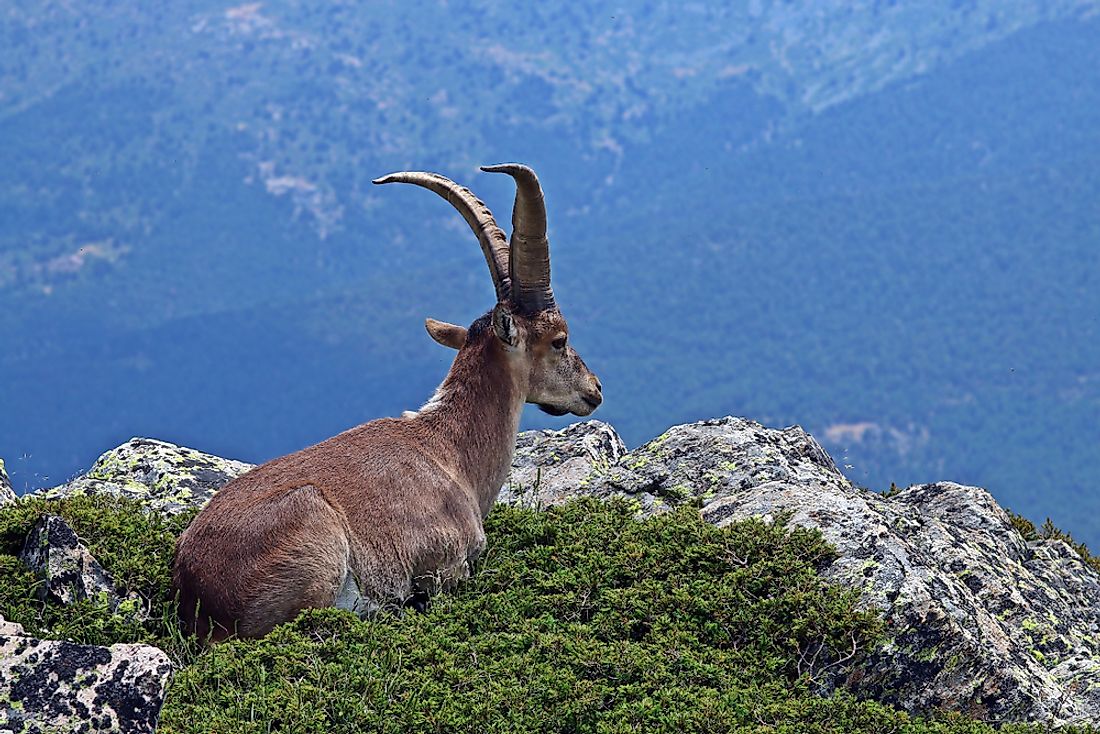
Amid the picturesque mountainous scenery that the Spanish terrain offers is a vast array of flora and fauna. This country hosts some rare species of animals including the golden eagle, Eurasian brown bear, Iberian wolf, bearded vulture, and the Iberian lynx. Bird watching is primarily a favorite tourist activity in Spain because there are at least 635 different species of birds found in this country.
10. Iberian Lynx
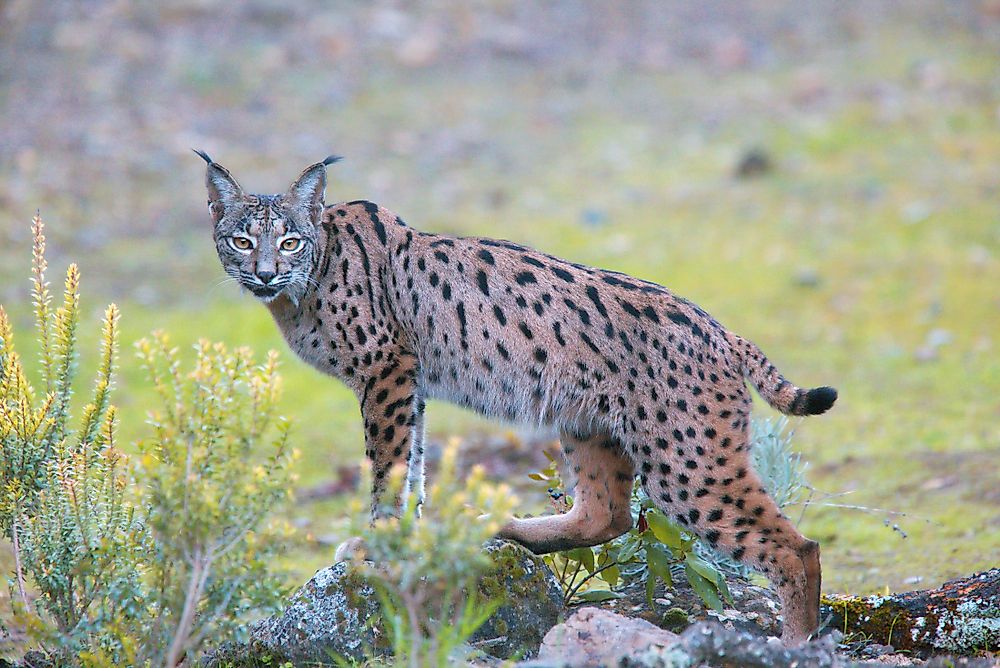
Located across the Iberian Peninsula, the Iberian lynx is one of the most magnificent sights in Spain. This animal is a species of wild cats. Its fur is short and ranges from a tawny color to bright yellowish. It has spots similar to those of a cheetah or a leopard, but its facial whiskers and tufted ears distinguish it from these relatives. The Iberian lynx’s diet consists almost exclusively of the European rabbit. However, the populations of this lynx have been on a sharp decline due to overhunting, poaching, and fragmentation of its natural habitat.
9. Brown Bear
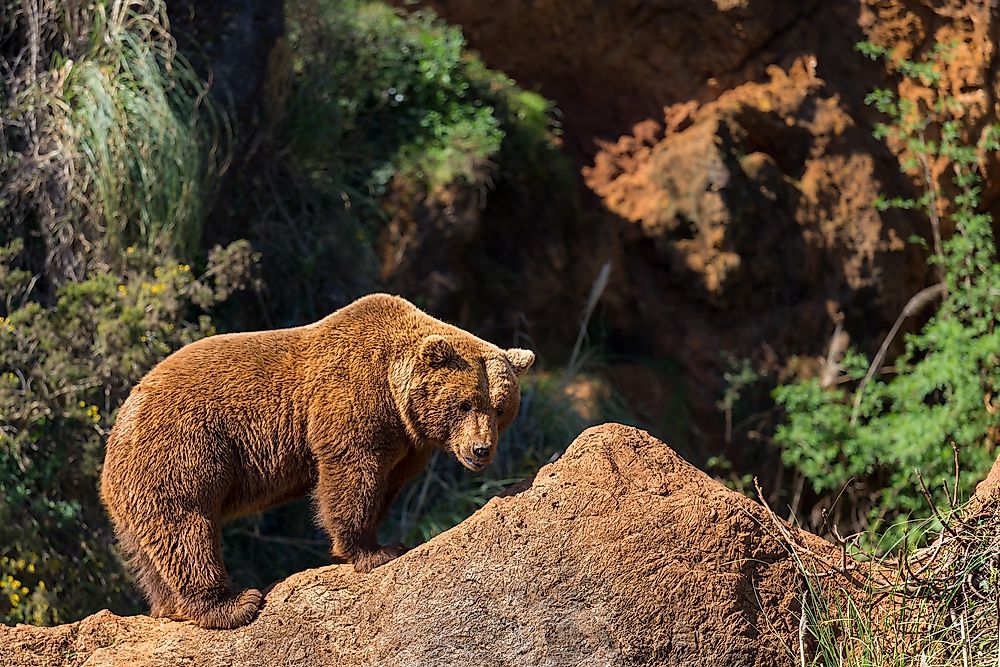
The brown bear features a fur coat ranging from yellow-brownish to dark brown. There are some individuals with red-brown and others with an almost black color. Like other bears, it has a sturdy bone structure and large paws with claws that can measure up to 4 inches in length. The brown bear can weigh up to 1,058 pounds, but the weight varies typically as an influence of season and the habitat of the individual. Although the brown bear population has declined over the years, it is listed by the International Union for Conservation of Nature (IUCN) as Least Concern.
8. Eurasian Beaver
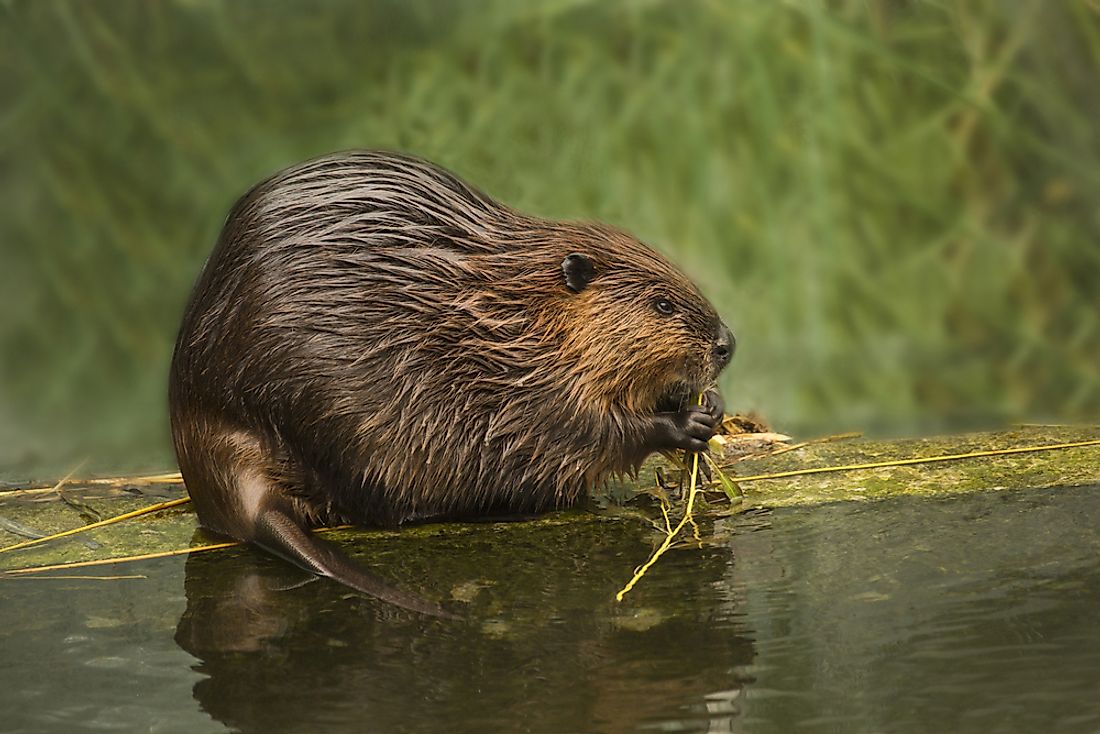
The Eurasian beavers are among the largest living rodents in the world and are the largest rodent in Spain. These beavers can weigh up to 66 pounds with females averaging higher than males. The tail measures between 9.8 and 19.7 inches. The Eurasian beavers give birth to one litter per year and live in monogamous pairs throughout their lives, unlike other rodents. This beaver was once a common sighting across Spain and generally Europe. However, it was hunted almost to extinction for its valuable fur as well as castoreum. By 1900 there were only 1,200 beavers in eight isolated populations across Asia and Europe. Reintroduction nonetheless has seen the populations increase.
7. Spanish Ibex
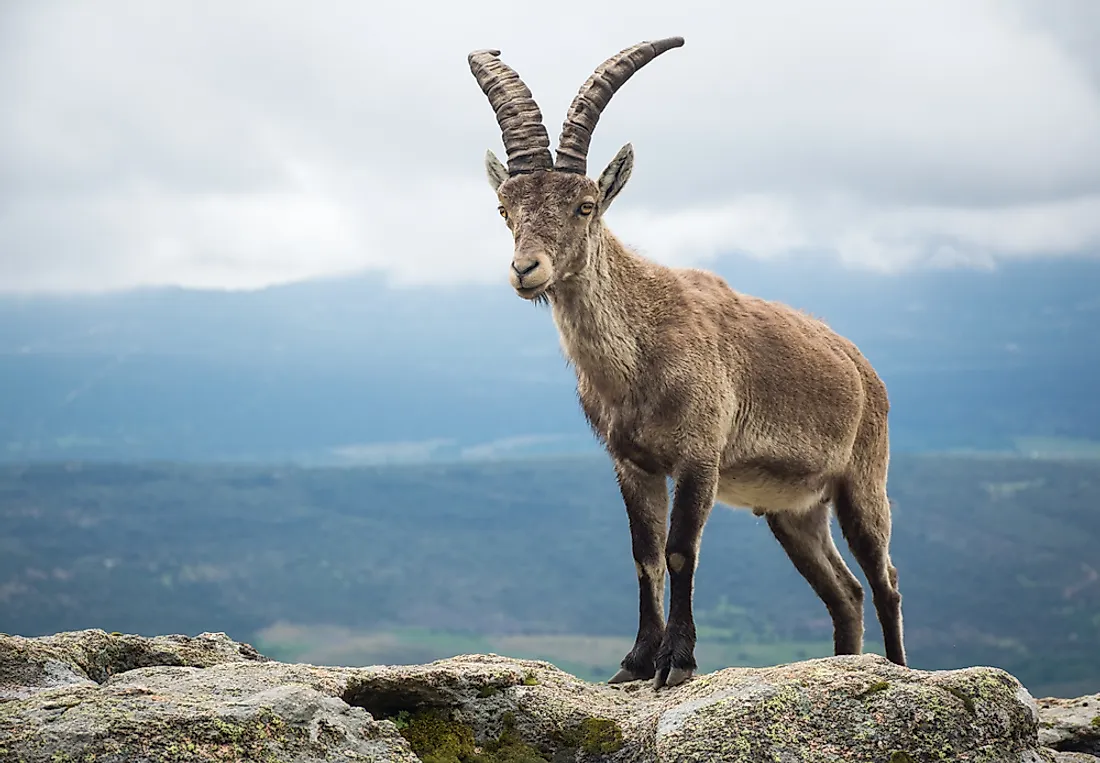
The Spanish ibex is a distant relative of the ordinary goat. Its habitat ranges across the plains and the rocky mountains of both Spain and Portugal. Both the males and females have horns, but those of the females tend to be considerably smaller. The males’ horns can grow to almost 30 inches. Females attain maturity and full bone strength about two years earlier than young males. The Spanish ibex has a unique response to predatory attacks. What would seem to the untrained eye as a disorganized escape of a group is an intricately planned move. Once the alarm is sounded, the most mature male will lead the group of male-only ibexes to the safe ground while the most-experienced female will do the same in the group of female-only ibexes. The IUCN has classified the ibex as least concern in as much as their numbers have decreased considerably in some parts of Spain.
6. Golden Eagle
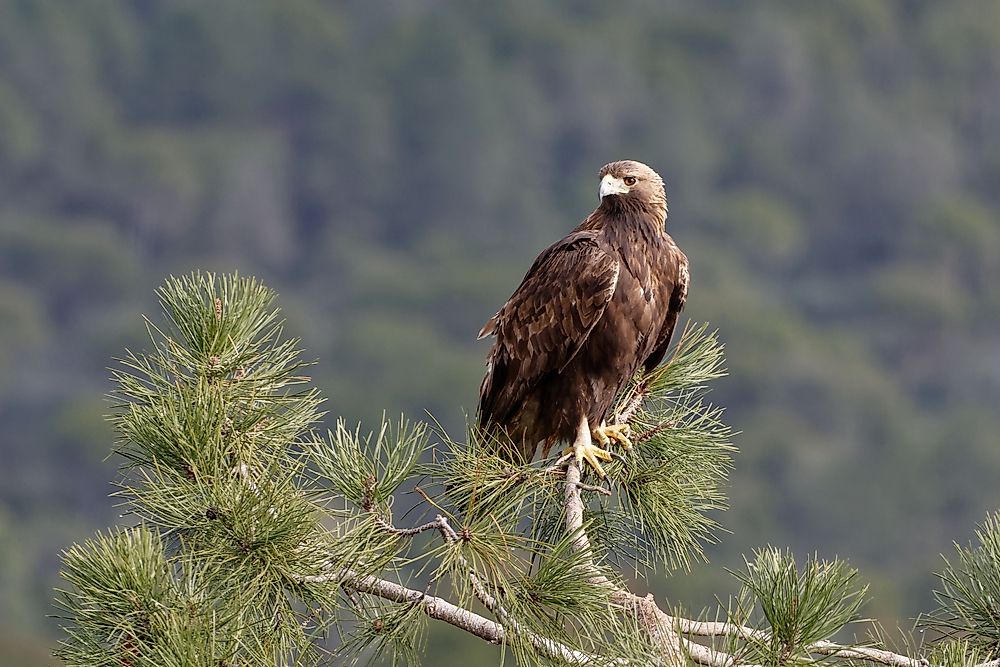
The golden eagle is one of Spain’s largest birds of prey. It has dark brown plumage with a lighter golden-brown plumage around the nape. Youngsters that have not reached maturity usually have a white streak on the tail and small white markings on the wings. Golden eagles have powerful feet endowed with huge and sharp talons. Their diet is primarily comprised of rabbits, hares, and marmots. They have a massive wingspan that can measure up to 7.8 feet. This wingspan is the fifth-largest among eagles and females tend to have a larger wingspan than the males.
5. Common Genet
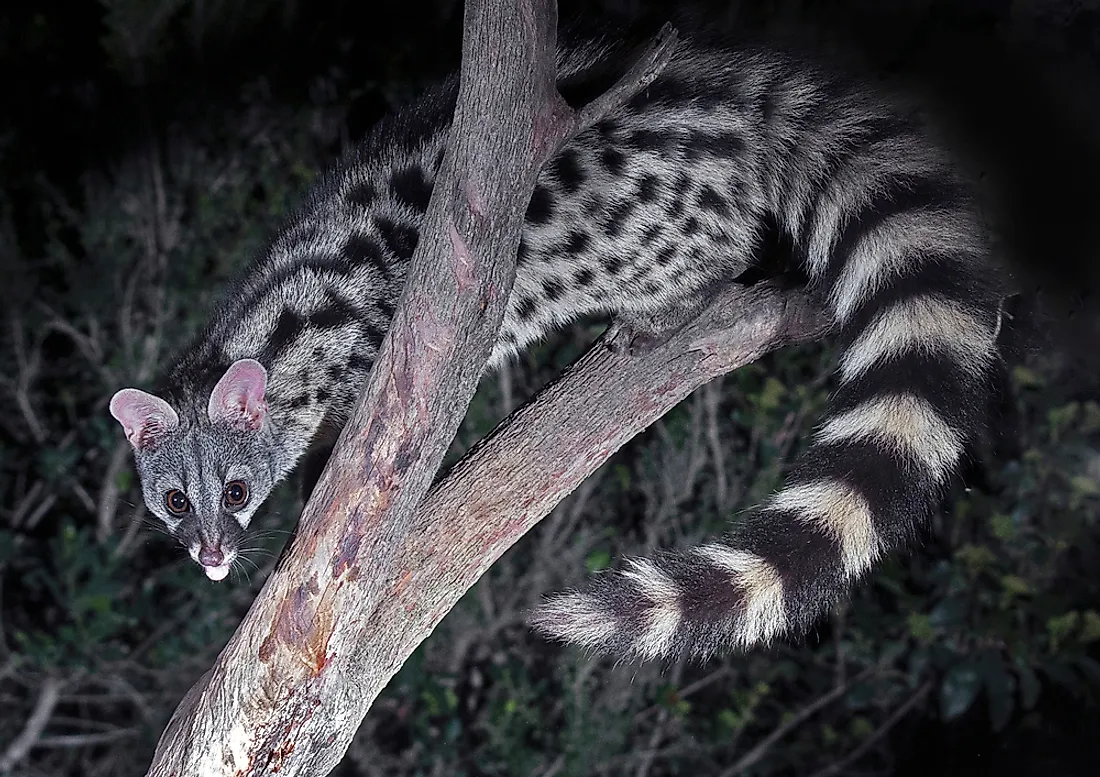
The common genet has a slender, feline-like body measuring between 17 and 22 inches in length and a tail measuring in the bracket of 13 and 20 inches. Males tend to be roughly 10% larger and heavier than females weighing up to 4.4 pounds. The head of the common genet is small with a pointed muzzle, large eyes, and oval ears. The fur coat is typically a pale grey color with many black markings. Spain is one of the few European countries where the common genet has been spotted there are records of their existence in parts of Belgium, Switzerland, and Germany. It is listed as Least Concern by the IUCN.
4. Iberian Pig
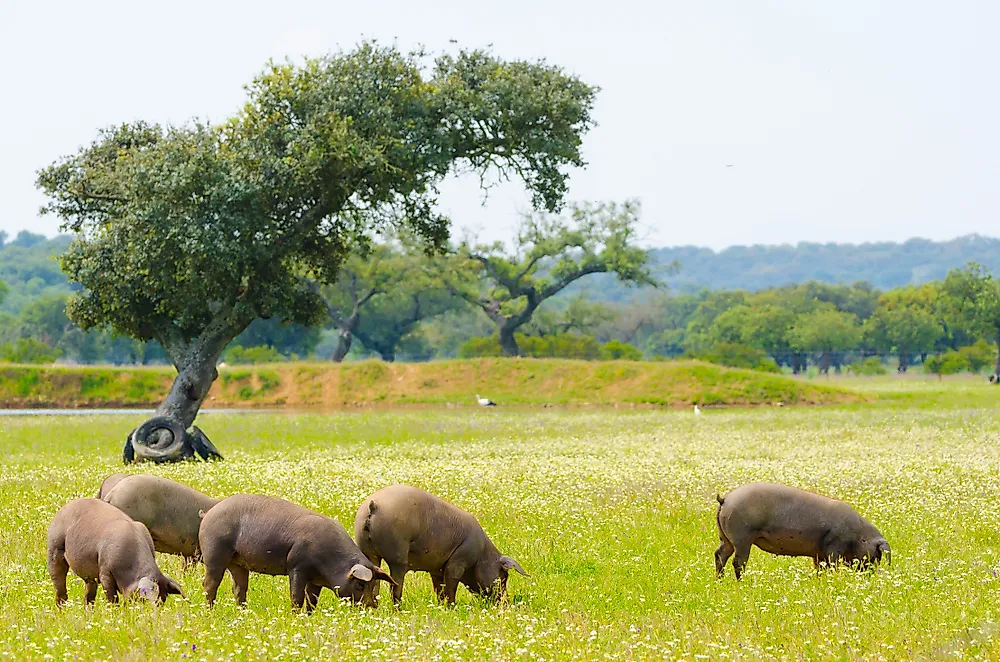
The Iberian pig has its largest populations concentrated in central and southern parts of Spain. It can be either dark or red. The dark individuals have a coat color that ranges from grey to black. Similar to the domestic pig, this breed shows a good appetite and tend to obese. Iberian pigs produce highly commercialized ham owing to their intramuscular fat and the traditional diet of acorns. As a result, their meat is highly prized. The populations of the Iberian pig have been on a decline in the past decade as a result of the African swine fever which wiped out a considerably large number of pigs.
3. Lammergeier
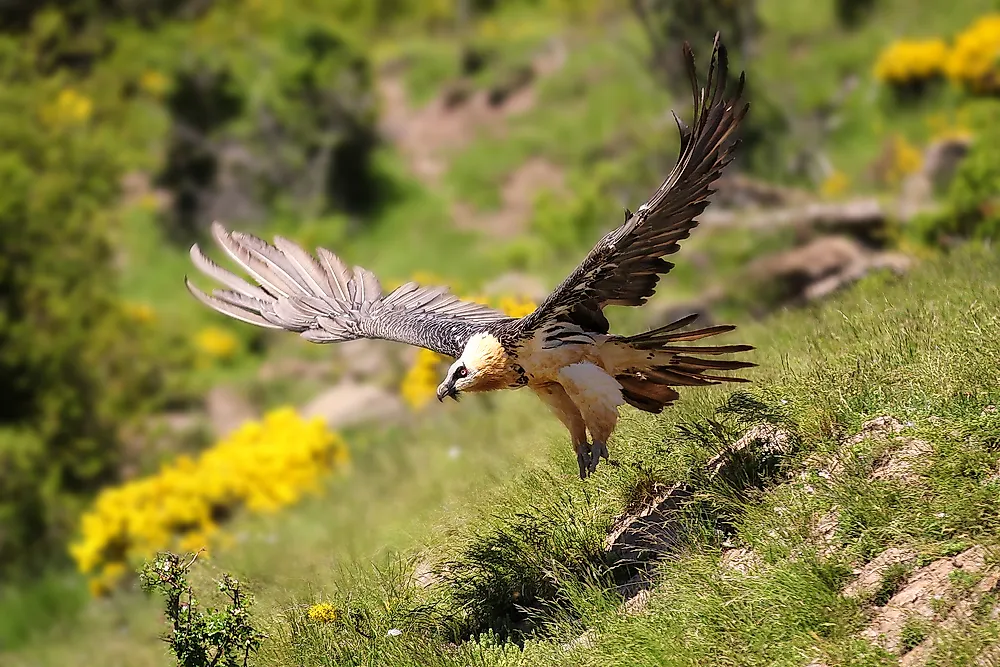
The lammergeier is also known as the bearded vulture because of its black eye patches that extend below its short bill as tufted whiskers that somewhat resemble a beard. It has several unique features that distinguish it from other birds of prey such as the lozenge-shaped tail. It is also distinctive among vultures because of its feathered neck. This bird has a massive wingspan ranging between 7.6 and 7.9 feet in length. The lammergeier is the only animal that is known to have a diet that is almost exclusively composed of bone. It carries the bones high above the ground and drops them shattering on impact. It can weigh up to 17.2 pounds with an average of 13.7 pounds.
2. Pilot Whale
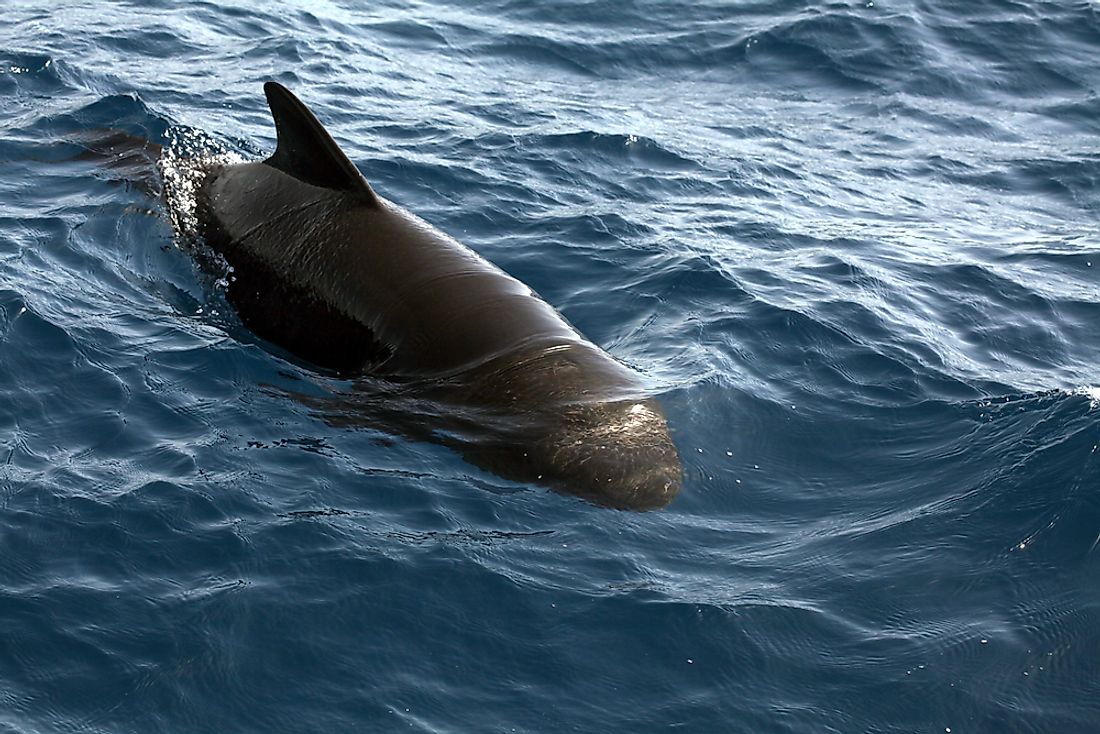
The pilot whale exists in two species: long-finned and the short-finned. It is difficult to tell them apart as they resemble each other entirely although the short-finned whales are often larger. These whales are mostly black, brown, or dark grey. The pilot whale is stouter than most other members of the dolphin family and has a lifespan ranging between 45 and 60 years. They can grow up to 23 feet long with males being at least 3 feet longer than females.
1. Iberian Wolf
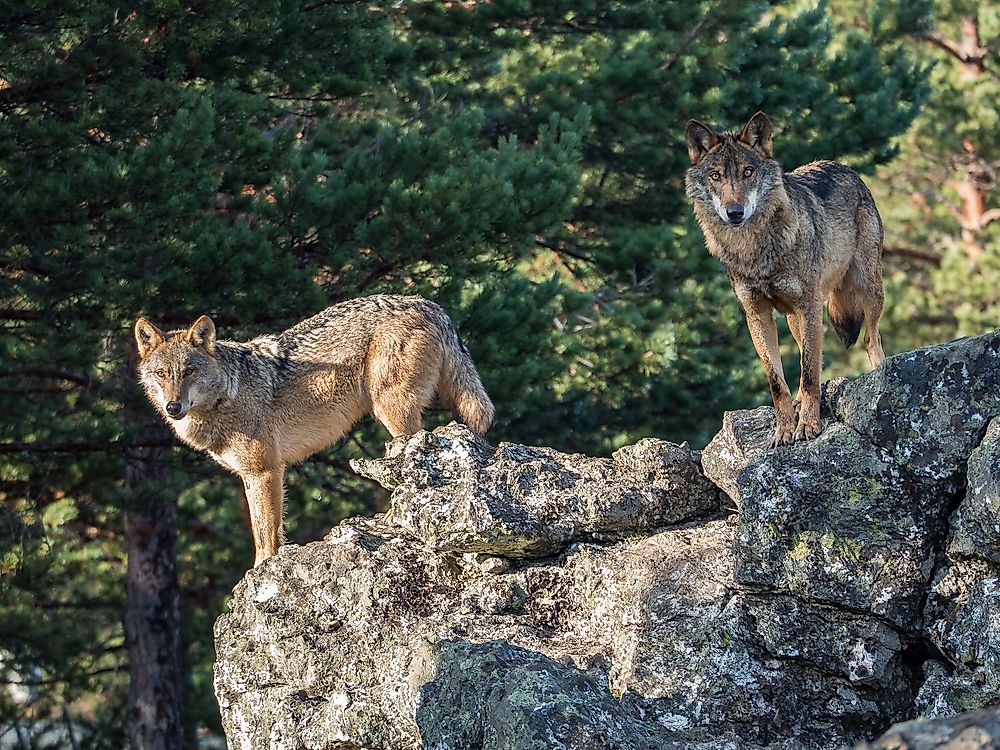
The Iberian wolf is commonly found in the northwestern forests and plains of Spain and northern Portugal. It is distinctive from the Eurasian wolf owing to its slender frame, white marking near the upper lips and dark markings on its tail. Males are heavier than females weighing up to 110 pounds in contrast to the females’ maximum weight of 88 pounds. It lives in small packs which reduce and stabilize the population of their prey. The diet of the Iberian wolf is composed primarily of red deer, rabbits, ibexes, and roe deer. In some areas, it has been seen to eat domestic animals including sheep, goats, and even dogs.











